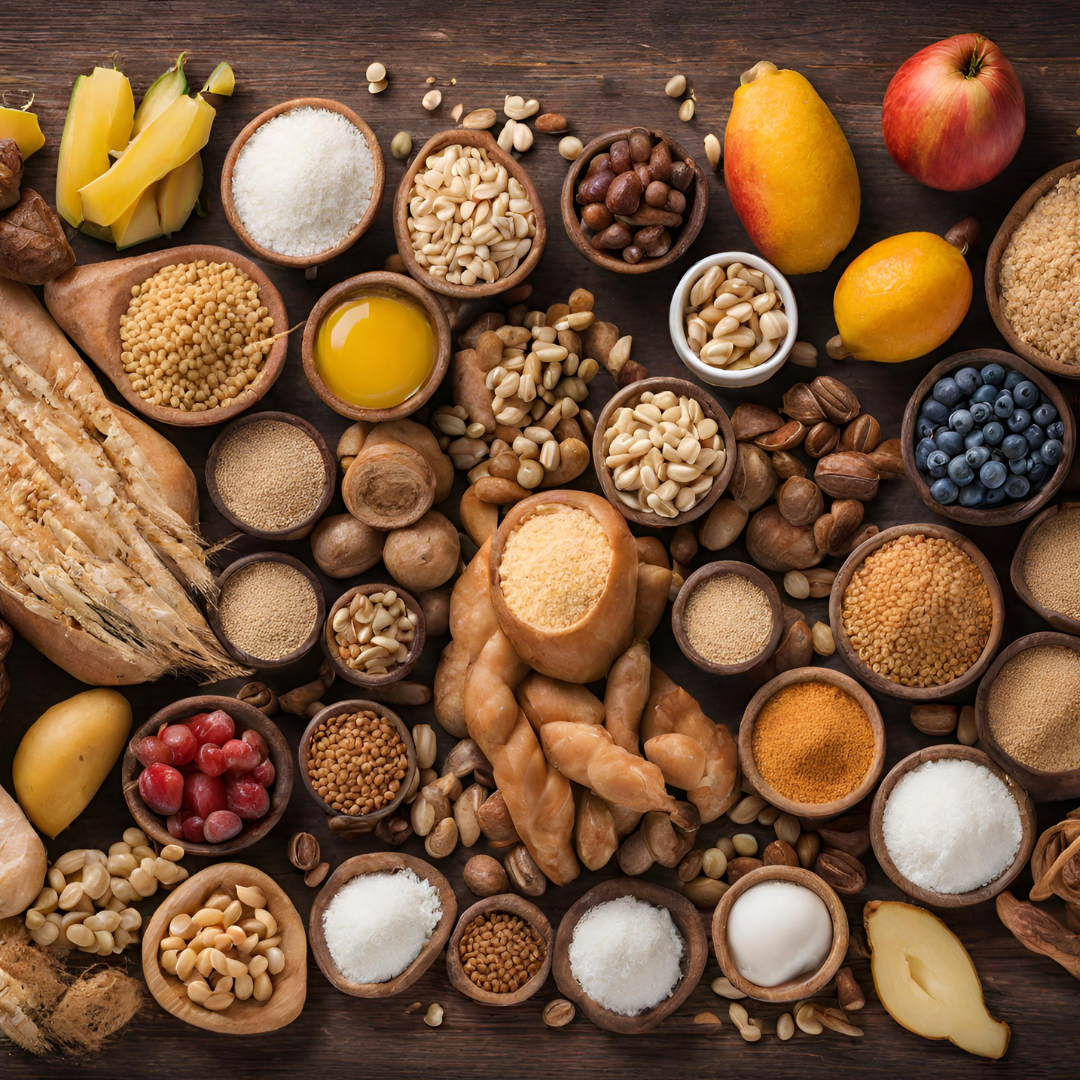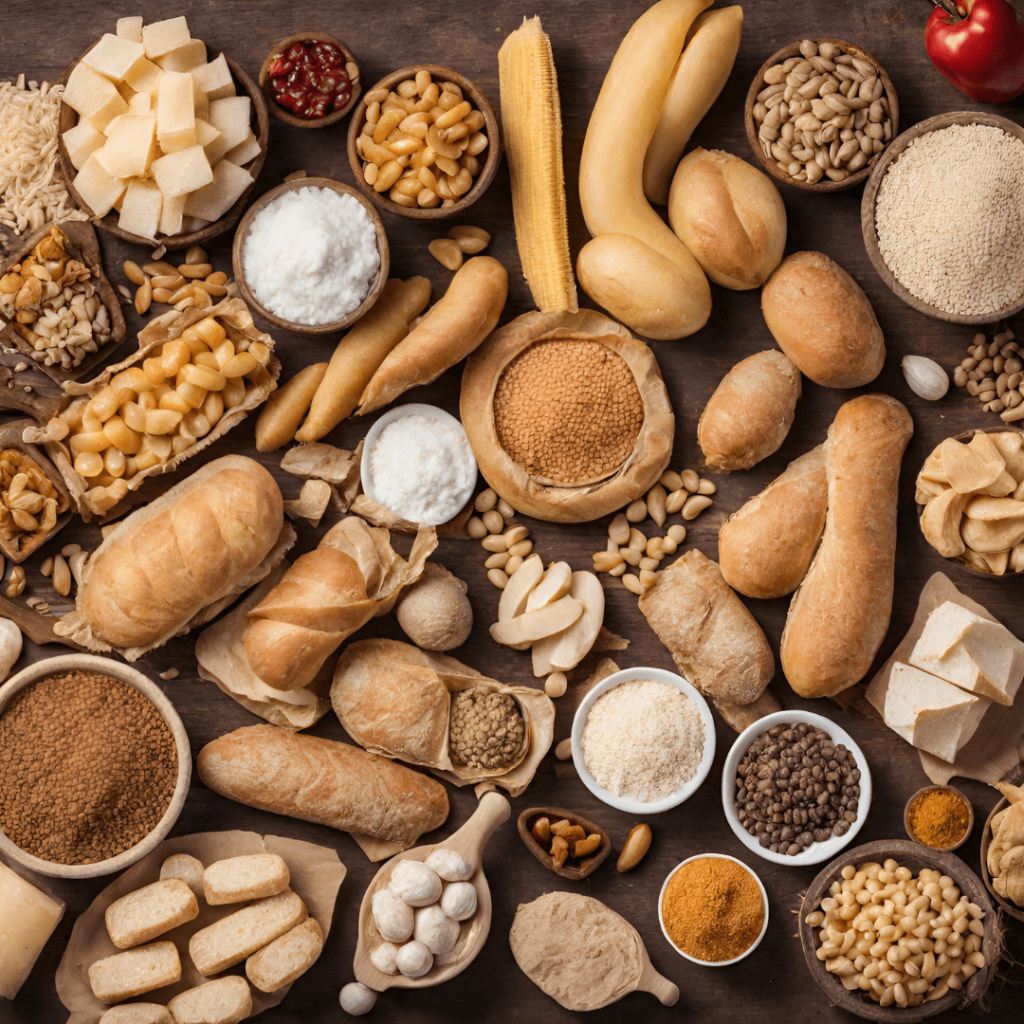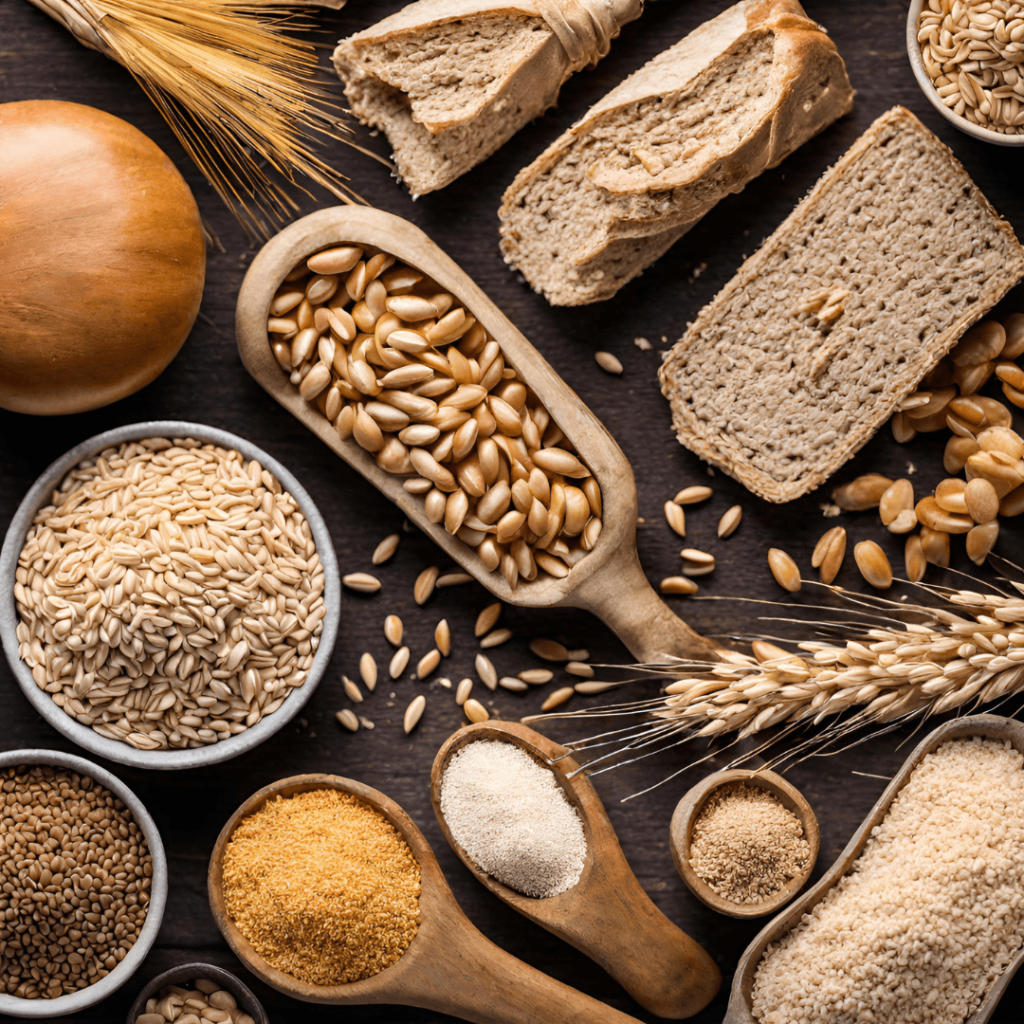Great Health Great Fitness
“Navigating Carbohydrates: Mastering the Optimal Types for Health”
In today's fast-paced world, it's crucial to stay fueled and energized throughout the day. With the right nutrition, you can optimize your performance and enhance your overall well-being. This guide explores practical tips and strategies to help you make informed choices about what you eat, ensuring you have the energy and nutrients you need to thrive. Whether you're an athlete, a busy professional, or simply looking to improve your health, this guide has you covered.

Introduction
Carbohydrates, often scrutinized in various diet trends, play a crucial role in providing energy for our bodies. However, not all carbohydrates are created equal. This extensive exploration aims to unravel the intricate world of carbohydrates, offering insights into their types, functions, and impact on health. Join us on a comprehensive journey as we navigate the realm of carbohydrates, empowering you to make informed choices that promote well-being.
https://medlineplus.gov/carbohydrates.html
Understanding Carbohydrates
Dive into the fundamental understanding of carbohydrates as a primary source of energy for the body. Explore the chemical structure of carbohydrates, including sugars, starches, and fibers.Carbohydrates serve as the primary source of energy for the body, making them a crucial component of a balanced diet. This section delves into the fundamental understanding of carbohydrates, exploring their chemical structure and classification.
Carbohydrates are composed of carbon, hydrogen, and oxygen atoms, arranged in various configurations. Sugars, such as glucose, fructose, and sucrose, are simple carbohydrates consisting of one or two sugar molecules. Starches, found in foods like grains, potatoes, and legumes, are complex carbohydrates made up of long chains of sugar molecules. Fiber, another type of complex carbohydrate found in fruits, vegetables, and whole grains, provides bulk to the diet and supports digestive health. By understanding the different types of carbohydrates and their roles in the body, individuals can make informed choices to support their energy needs and overall well-being.
The Role of Carbohydrates in the Body

Examine the vital functions of carbohydrates in the body, beyond energy provision. Discuss their role in supporting brain function, fueling muscles, and aiding in overall metabolic processes. While carbohydrates are primarily known for their role as a source of energy, their functions in the body extend far beyond mere fuel provision. This section delves into the vital roles that carbohydrates play in supporting various physiological processes. In addition to fueling the body’s energy needs, carbohydrates are essential for supporting brain function.
Glucose, derived from carbo, is the primary fuel for the brain, providing the energy necessary for cognitive processes, concentration, and memory. Carbohydrates also play a crucial role in fueling muscle activity, particularly during high-intensity exercise. Muscle glycogen, stored carbohydrates in the muscles, serves as a readily available source of energy during physical activity, helping to sustain endurance and performance.
Furthermore, they are involved in numerous metabolic processes throughout the body, including the synthesis of essential molecules such as nucleic acids and certain proteins. Additionally, dietary fiber, a type of carbohydrate found in plant-based foods, supports digestive health by promoting regular bowel movements, regulating blood sugar levels, and lowering cholesterol. By examining the multifaceted functions of carbohydrates, individuals can gain a deeper appreciation for their importance in supporting overall health and well-being.
Simple Carbohydrates vs. Complex Carbohydrates
Differentiate between simple and complex . Explore sources of each type, their impact on blood sugar levels, and the importance of choosing carbohydrates with a favorable nutritional profile. Understanding the distinction between simple and complex carbohydrates is essential for making informed dietary choices. This section delves into the differences between these two types of carbohydrates, exploring their sources, impact on blood sugar levels, and nutritional significance. Simple carbohydrates, also known as simple sugars, are composed of one or two sugar molecules.
They are found naturally in foods such as fruits, milk, and honey, as well as in processed foods like candy, soda, and baked goods. Due to their chemical structure, simple health are rapidly digested and absorbed into the bloodstream, leading to a quick spike in blood sugar levels followed by a rapid drop. On the other hand, complex carbohydrates consist of long chains of sugar molecules and are found in foods such as whole grains, legumes, vegetables, and fruits.
Complex take longer to digest and provide a more sustained release of energy, resulting in a gradual rise and fall in blood sugar levels. Choosing healthy with a favorable nutritional profile, such as complex carbohydrates rich in fiber, vitamins, and minerals, is important for maintaining stable blood sugar levels, promoting satiety, and supporting overall health. By incorporating a variety of complex carbohydrates into their diet, individuals can ensure a steady supply of energy while reaping the nutritional benefits associated with these foods.
The Glycemic Index: Understanding Blood Sugar Impact
Introduce the concept of the glycemic index (GI) and its relevance in evaluating the impact of carbohydrates on blood sugar levels. Discuss the implications of choosing low-GI foods for sustained energy and health. This section introduces the glycemic index and its relevance in evaluating the impact of carbohydrates on blood sugar levels. The glycemic index is a scale that ranks carbohydrates based on how quickly and significantly they raise blood glucose levels after consumption compared to pure glucose, which has a GI of 100.
Carbohydrates with a high GI value are rapidly digested and absorbed, causing a sharp spike in blood sugar levels, followed by a rapid decline. In contrast, with a low GI value are digested and absorbed more slowly, resulting in a gradual and sustained release of glucose into the bloodstream. Choosing low-GI foods, such as whole grains, legumes, fruits, and vegetables, can help stabilize blood sugar levels, promote satiety, and provide sustained energy throughout the day.
Additionally, low-GI foods have been associated with various health benefits, including reduced risk of type 2 diabetes, improved weight management, and better control of blood cholesterol levels. By incorporating more low-GI foods into their diet, individuals can support their overall health and well-being while enjoying sustained energy and stable blood sugar levels.
Whole Grains: The Cornerstone of Healthy Carbohydrates

Highlight the nutritional significance of whole grains. Explore a variety of whole grains, their benefits, and their role in providing fiber, vitamins, and minerals for optimal health.
Whole grains, such as brown rice, quinoa, oats, barley, and whole wheat, are grains that retain all parts of the grain kernel, including the bran, germ, and endosperm. This means they are rich in fiber, vitamins, minerals, and phytochemicals that are essential for optimal health.
Fiber is one of the key components of whole grains and plays a crucial role in supporting digestive health, promoting satiety, and regulating blood sugar levels. Additionally, whole grains are rich in vitamins, including B vitamins like folate, niacin, and riboflavin, which are important for energy metabolism, brain function, and cell health.
Fiber: The Unsung Hero of Carbohydrates
Delve into the world of dietary fiber as an essential component of a healthy diet. Discuss the different types of fiber, their roles in digestion, and the numerous health benefits associated with adequate fiber intake.
There are two main types of dietary fiber: soluble fiber and insoluble fiber. Soluble fiber dissolves in water and forms a gel-like substance in the digestive tract. It helps to slow down digestion, regulate blood sugar levels, and lower cholesterol levels. Good sources of soluble fiber include oats, beans, lentils, fruits, and vegetables.
On the other hand, insoluble fiber does not dissolve in water and adds bulk to the stool, promoting regular bowel movements and preventing constipation. It also helps to keep the digestive system healthy and may reduce the risk of certain digestive disorders, such as diverticulitis. Whole grains, nuts, seeds, and the skin of fruits and vegetables are rich sources of insoluble fiber.
Both types of fiber play important roles in digestion by aiding in the movement of food through the digestive tract, promoting satiety, and supporting the growth of beneficial bacteria in the gut. Additionally, adequate fiber intake has been linked to numerous health benefits, including lower risk of heart disease, stroke, type 2 diabetes, and certain types of cancer.
Resistant Starch: A Unique Carbohydrate with Health Benefits
Explore the concept of resistant starch and its unique characteristics. Discuss its potential health benefits, including improved gut health and blood sugar regulation.
Resistant starch can be categorized into four types based on its physical and chemical properties. Type 1 resistant starch is found in whole grains, seeds, and legumes and is resistant to digestion due to its granular structure. Type 2 resistant starch is found in raw potatoes, green bananas, and uncooked grains and is resistant to digestion because it is physically inaccessible to digestive enzymes. Type 3 resistant starch forms when starchy foods such as potatoes and rice are cooked and then cooled, causing the starch to retrograde and become resistant to digestion. Type 4 resistant starch is chemically modified to resist digestion and is often used as a food additive.
Carbohydrates and Weight Management

Examine the relationship between carbohydrate consumption and weight management. Discuss how choosing the right types of carbohydrates can contribute to satiety, weight loss, and overall well-being.
Not all are created equal, and their impact on weight management can vary depending on several factors, including their glycemic index (GI), fiber content, and processing. High-GI carbohydrates, such as refined grains and sugars, are rapidly digested and absorbed, leading to spikes in blood sugar levels followed by crashes, which can trigger hunger and cravings. In contrast, low-GI , such as whole grains, legumes, fruits, and vegetables, are digested and absorbed more slowly, providing sustained energy and promoting feelings of fullness and satiety.
Carbohydrates and Exercise: Fueling Physical Activity
Discuss the importance of excercise in fueling physical activity. Explore the timing and types of carbohydrates that support energy needs for different levels of exercise intensity.
During exercise, the body primarily relies on carbohydrates as its main source of energy, especially during high-intensity activities. They are stored in the muscles and liver as glycogen, which is broken down into glucose and used to fuel muscle contractions. Adequate glycogen stores are essential for sustaining energy levels and preventing fatigue during prolonged or intense exercise.
The timing of carbohydrate intake before, during, and after exercise can significantly impact performance and recovery. Consuming before exercise helps to “top up” glycogen stores and provide readily available energy for the muscles. Choosing easily digestible carbohydrates, such as fruits, grains, and low-fiber snacks, can help prevent gastrointestinal discomfort during exercise.
Carbohydrates and Chronic Diseases: Separating Fact from Fiction
Address common misconceptions about health and their alleged role in chronic diseases. Provide evidence-based insights into how the right types of hydrates can contribute to disease prevention.
One common misconception is that all carbohydrates are inherently unhealthy and contribute to weight gain and chronic diseases such as obesity, diabetes, and heart disease. However, it is not carbohydrates themselves that are the issue but rather the types and amounts consumed, as well as overall dietary patterns. Diets high in refined, added sugars, and processed foods have been linked to an increased risk of chronic diseases due to their association with weight gain, insulin resistance, inflammation, and other metabolic disturbances.
In contrast, from whole, minimally processed sources such as fruits, vegetables, whole grains, legumes, and dairy products can play a beneficial role in disease prevention. These are rich in fiber, vitamins, minerals, and phytonutrients, which have been shown to support overall health and reduce the risk of chronic diseases. For example, fiber-rich can help lower cholesterol levels, regulate blood sugar levels, promote satiety, and support healthy digestion, all of which contribute to a reduced risk of heart disease, diabetes, and obesity.
Choosing Healthy Carbohydrate Sources
Offer practical tips for selecting healthy sources in daily meals. Discuss the importance of variety and moderation in promoting a balanced and nutrient-rich diet. Choose in their natural, unprocessed forms whenever possible. Opt for whole grains like quinoa, brown rice, oats, and whole wheat bread instead of refined grains like white rice and white bread. Whole grains retain their fiber, vitamins, minerals, and other beneficial nutrients, making them a healthier choice.
Carbohydrates in Different Diets: Examining Popular Trends

Explore the presence in various popular diets, including low-carb, keto, and Mediterranean diets. Discuss how these diets approach carbohydrate intake and their potential impacts on health.
Low-carb diets restrict carbohydrate intake, typically to less than 20-100 grams per day, depending on the specific plan. These diets emphasize foods high in protein and fat while limiting or avoiding sources of carbohydrates such as grains, starchy vegetables, fruits, and sugars.
The goal of low-carb diets is to shift the body into a state of ketosis, where it burns fat for fuel instead of carbohydrates. While low-carb diets may lead to short-term weight loss and improvements in certain health markers like blood sugar and triglyceride levels, there are concerns about their long-term sustainability and potential impacts on heart health due to the emphasis on high-fat, animal-based foods.
The Impact of Processing on Carbohydrates
Examine the effects of food processing on carbo . Discuss how processing can alter the nutritional quality of carbohydrates and the importance of choosing minimally processed options.
Conclusion
In conclusion, navigating involves a nuanced understanding of their types, functions, and impact on health. By choosing the right types of carbohydrates and embracing a balanced approach, individuals can harness the nutritional benefits of this essential macronutrient while promoting overall well-being. This comprehensive guide serves as a roadmap for making informed choices, dispelling myths, and fostering a healthier relationship with carbohydrates—a key component of a nourishing and sustainable diet.
For More Information you can check our blogs The 10 Holistic Health Benefits of Regular Exercise: A Comprehensive Analysis .
